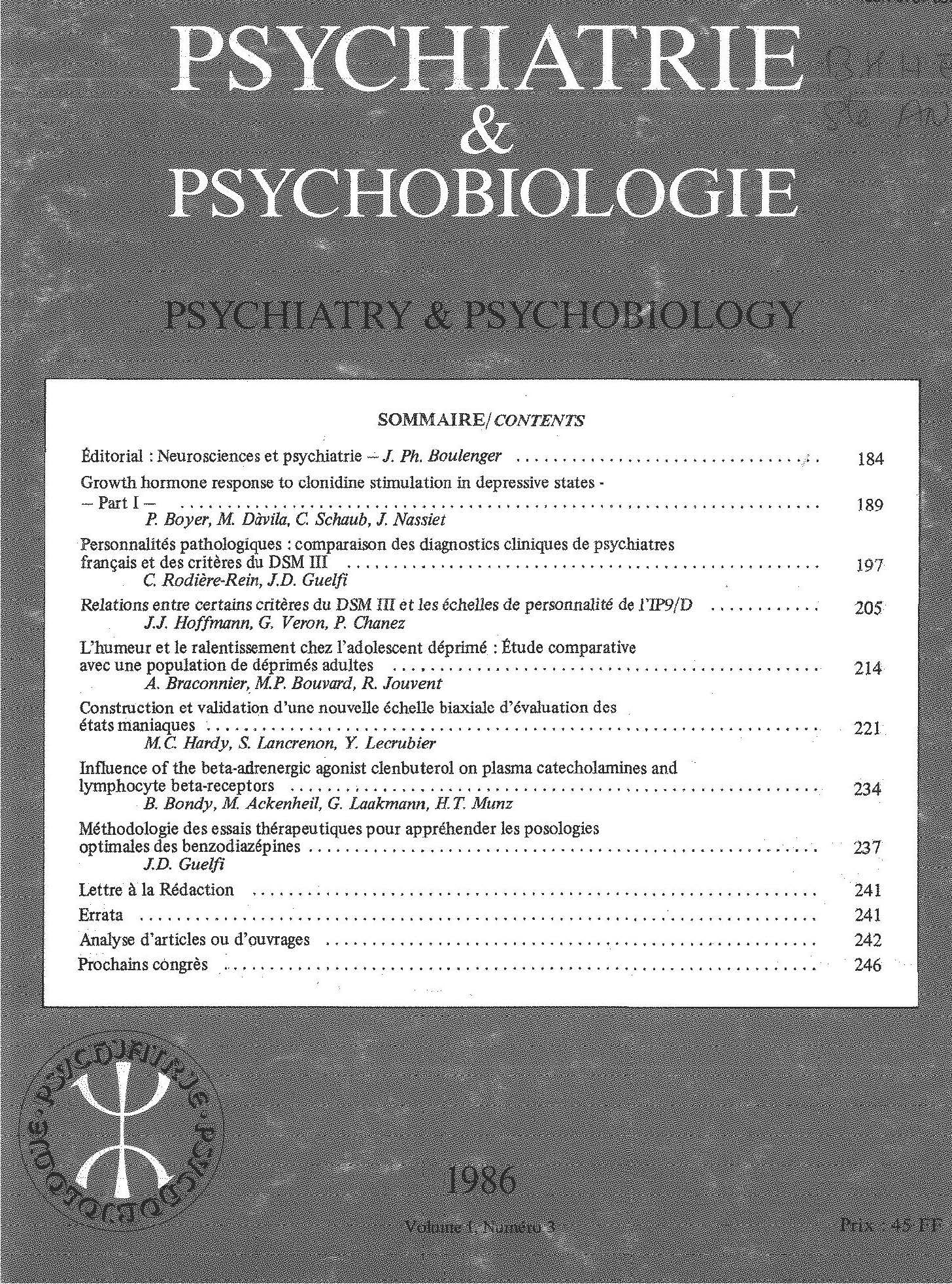No CrossRef data available.
Article contents
The dexamethasone suppression test predictive of the therapeutic response to specific antidepressants
Published online by Cambridge University Press: 28 April 2020
Summary
The value of the Dexamethasone Suppression Test (DST) in predicting the therapeutic response to a specific antidepressant is a very controversial topic, probably due to methodological issues. The aim of this study was to evaluate the power of the DST in predicting the response of primary and secondary depressives, diagnosed according to Feighner criteria, to either clomipramine or maprotiline. Patients were screened using standardized psychiatric interview, Current and Past Psychopathology Scales, the Hamilton Rating Scale for Depression (HRSD), and the Beck Depression Inventory (BDI); the Michigan Discriminant Index was determined providing an endogeneity score. A 1 mg DST was performed. Treatment was assigned double blind and at random, according to a fixed schedule with administration of up to 225 mg of either drug for three weeks. After this period patients were again evaluated with the Hamilton Rating Scale for Depression and Beck Depression Inventory, and a DST was again performed.
Treatment reponse was defined in terms of reduction of HRSD and BDI scores. Serum levels of antidepressants were documented in a number of patients.
HRSD score reduction did not yield any significant results.
Insofar as BDI score reduction was concerned, nonsuppression on the DST (i.e. a post-dexamethasone cortisol value greater than or equal to 50 μg/l) predicted a better, or anyway a quicker, response to maprotiline; the DST results did not predict response in patients treated with clomipramine.
Despite some methodological pitfalls (a relatively small group of patients, insufficiently documented serum antidepressant levels) these results seem to warrant further investigation in this field.
Résumé
La valeur prédictive du Test de freinage à la dexaméthasone (DST) quant à une réponse thérapeutique préférentielle à des antidépresseurs spécifiques, est un sujet très controversé, ce qui est probablement surtout lié à des problèmes méthodologiques. Le but de cette étude était de mettre en évidence une éventuelle réponse thérapeutique préférentielle soit à la clomipramine, soit à la maprotiline, en fonction des résultats du DST. Les sujets étaient des patients hospitalisés, déprimés primaires et secondaires, diagnostiqués selon les critères de Feighner. La mise au point impliquait un entretien psychiatrique standardisé, les Current and Past Psychopathology Scales, l’échelle de Hamilton pour la dépression (HRSD) et l'inventaire de la dépression de Beck (BDI).
Une mesure de l’endogénéité fut calculée en utilisant le Michigan Discriminant Index. Un DST fut pratiqué à la fin d'une période de wash-out.
Le traitement (soit clomipramine, soit maprotiline) était instauré au hasard et en double aveugle, selon un schéma fixe, aboutissant à 225 mg après l semaine.
Après 3 semaines la réponse thérapeutique était évaluée à l’aide du HRSD et du BDI et un second DST était pratiqué.
Pour un certain nombre de patients les taux plasmatiques de l'antidépresseur ont pu être déterminés.
La réduction des notes au HRSD ne montrait aucune réponse préférentielle à l’un ou l’autre traitement.
Cependant la réduction des notes au BDI permettait de mettre en évidence que les patients sous maprotiline répondaient mieux (ou en tout cas plus rapidement) s’ils étaient nonsuppresseurs (c.à.d. ayant un taux de cortisol postdexaméthasone supérieur ou égal à 50 μg/l). Pour les patients sous clomipramine les résultats du DST étaient sans importance quant à la réponse thérapeutique.
Malgré un certain nombre de problèmes méthodologiques (nombre limité de patients, taux plasmatiques des antidépresseurs insuffisamment documentés), ces résultats semblent justifier la poursuite de ce type d’investigation.
- Type
- Research Article
- Information
- Copyright
- Copyright © European Psychiatric Association 1987



Comments
No Comments have been published for this article.